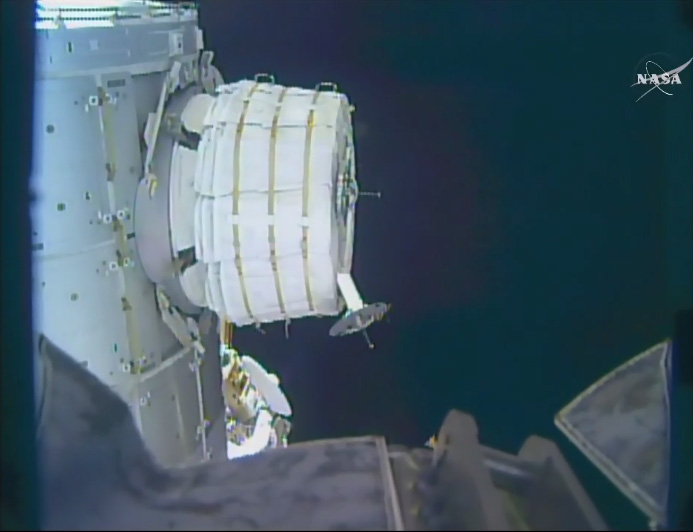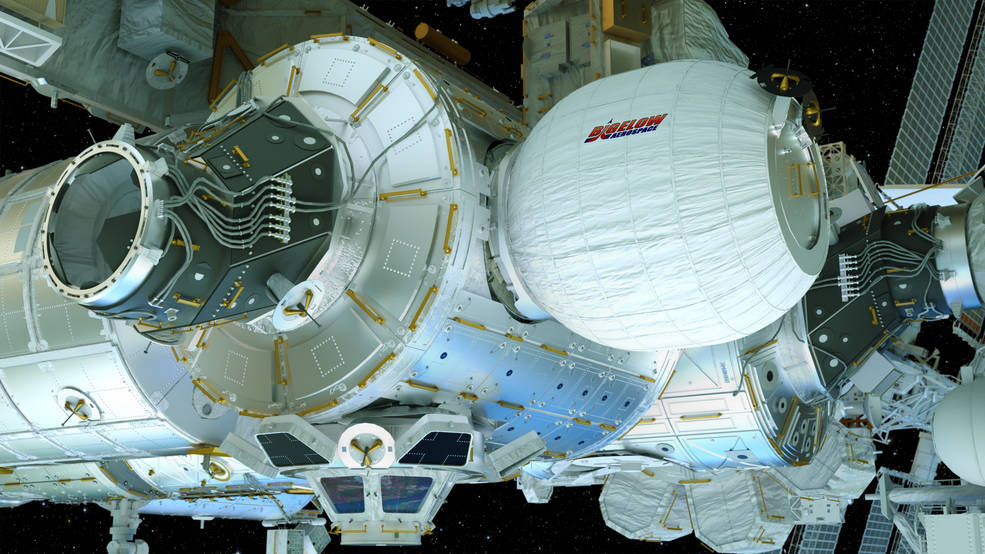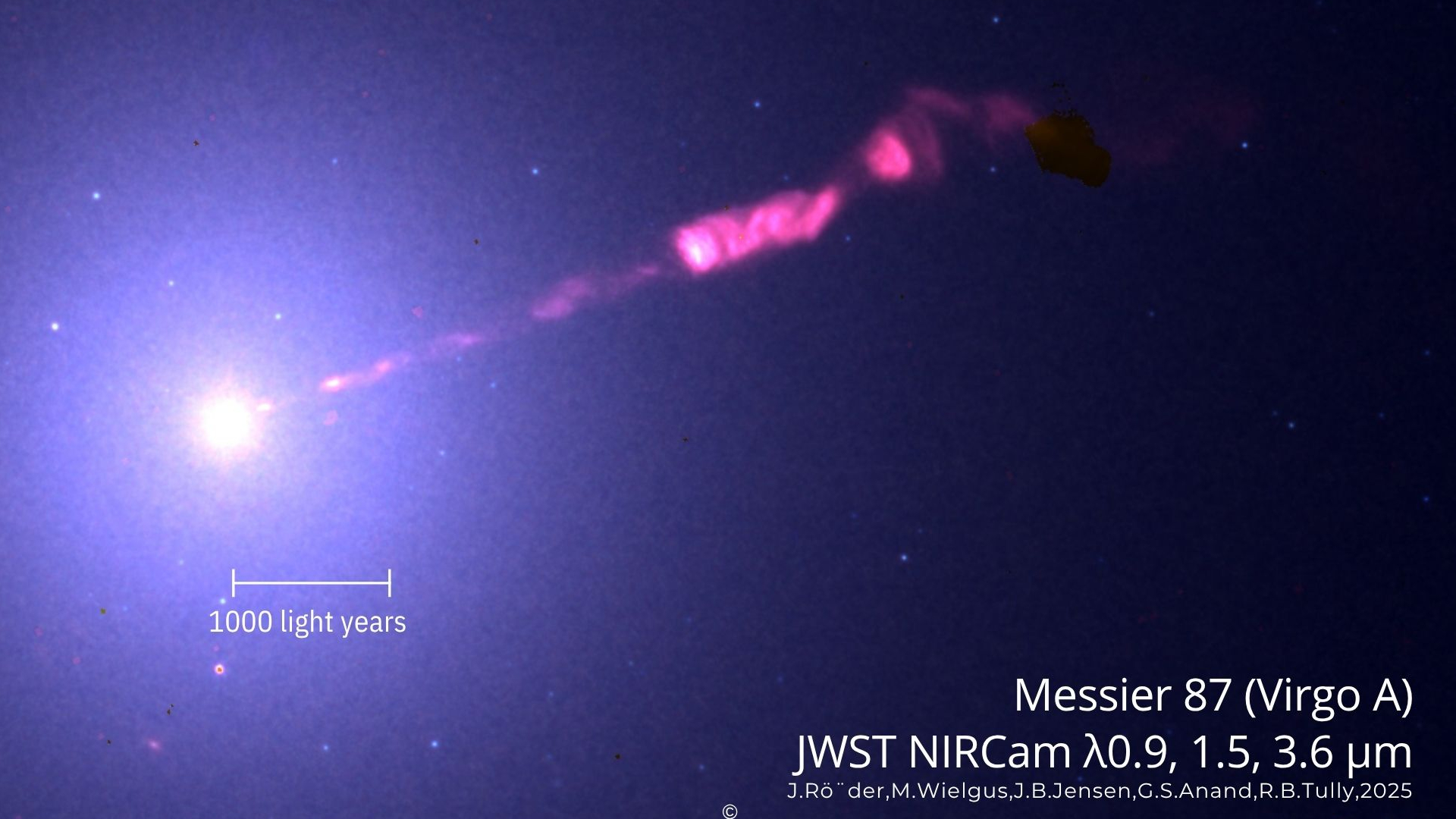NASA Hits Snag While Inflating Space Station's New BEAM Habitat

NASA called off attempts to inflate the first privately built expandable room on the International Space Station (ISS) today (May 26) after early efforts to pump up the module didn't go exactly as planned.
The inflatable room, called the Bigelow Expandable Activity Module (BEAM), is an experimental habitat built by the company Bigelow Aerospace. NASA wants to study the technology for future deep-space habitats, while Bigelow Aerospace has its sights set on private space stations and moon bases. But when NASA astronaut Jeff Williams began the inflation process for BEAM on the ISS early this morning, the module did not expand as expected, forcing flight controllers to call off the attempt for today. You can see video of the BEAM module inflation attempt here, courtesy of NASA.
"NASA is working closely with Bigelow Aerospace to understand why its module did not fully expand today as planned," NASA officials wrote in a statement, adding that engineers at the agency's Johnson Space Center in Houston (home to ISS Mission Control) are discussing the next steps for BEAM. "They are evaluating data from the expansion that has occurred thus far. If the data supports a resumption of operations, another attempt to complete the module's expansion could come as early tomorrow." [An Inflatable Space Room: BEAM in Pictures]
During today's inflation attempts, Williams manually let air inside the BEAM module via a small valve in 1- to 4-second intervals. At first, the module appeared to expand about 5 inches (12.7 centimeters), but then stalled. Mission Control opted to stand down for the day to analyze the situation, and Williams said he'd be ready for the next try.
"This are the kinds of things [where] the team is up for the challenge," Williams radioed down to Mission Control. "It's space business."
When packed, the BEAM module is a compressed cylinder just over 7 feet long (2.16 meters) and nearly 8 feet wide (2.36 m). But once fully inflated, BEAM will be over 13 feet long (4 m) and 10.5 feet wide (3.2 m), essentially a new room with 565 cubic feet (16 cubic m) of space. NASA and Bigelow Aerospace plan to study the inflated BEAM module over the next two years to gauge its effectiveness as a space habitat.
BEAM launched to the space station on a SpaceX Dragon cargo ship on April 8 and arrived two days later. On April 16, the uninflated module was installed on the space station's Tranquility node.
Breaking space news, the latest updates on rocket launches, skywatching events and more!
The Las Vegas-based Bigelow Aerospace is no stranger to expandable habitats. The company has launched two unmanned, inflatable habitat prototypes (called Genesis I and Genesis II) into orbit, in 2006 and 2007, respectively.
Bigelow Aerospace is also developing a larger space habitat, called the B330, which is designed to offer astronauts a whopping 11,650 cubic feet (330 cubic m) of space and serve as the foundation for a commercial space station or manned base on the moon or Mars.
Email Tariq Malik at tmalik@space.com or follow him @tariqjmalik and Google+. Follow us @Spacedotcom, Facebook and Google+. Original article on Space.com.
Join our Space Forums to keep talking space on the latest missions, night sky and more! And if you have a news tip, correction or comment, let us know at: community@space.com.

Tariq is the award-winning Editor-in-Chief of Space.com and joined the team in 2001. He covers human spaceflight, as well as skywatching and entertainment. He became Space.com's Editor-in-Chief in 2019. Before joining Space.com, Tariq was a staff reporter for The Los Angeles Times covering education and city beats in La Habra, Fullerton and Huntington Beach. He's a recipient of the 2022 Harry Kolcum Award for excellence in space reporting and the 2025 Space Pioneer Award from the National Space Society. He is an Eagle Scout and Space Camp alum with journalism degrees from the USC and NYU. You can find Tariq at Space.com and as the co-host to the This Week In Space podcast on the TWiT network. To see his latest project, you can follow Tariq on Twitter @tariqjmalik.

